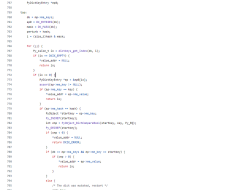
Artificial General Intelligence (AGI) hasn’t become real yet. However, research into this type of artificial intelligence where machines think and learn as people continues in different parts of the world. The idea behind AGI is to have machines develop self-awareness and consciousness. These developments have already started manifesting in innovations like self-driving cars. Once developed fully, AGI can potentially blur the intellectual differences that currently exist between machines and humans.
Although it’s still too early to tell whether machines can simulate human intellectual capabilities fully, the concept of AGI is fascinating. In this article, we explore AGI further to help you understand how it differs from artificial intelligence (AI) and the technologies behind it.
What is Artificial General Intelligence?
Artificial General Intelligence is a theoretical form of AI that can learn, understand, and apply knowledge to perform intellectual tasks like humans. Although AGI isn’t a reality yet, its design incorporates adaptability, flexibility, and problem-solving skills. These skills will enable it to perform any intellectual task that a human can, or in some instances, outperform human abilities.
Artificial General Intelligence vs Artificial Intelligence: What’s the Difference?
How Does General Artificial Intelligence Work?
Technologies that Drive Artificial General Intelligence
The concept of AGI is still in the theoretical stage. Research on its viability and efforts to create AGI systems continue in different parts of the world. The following are the emerging technologies that will most likely characterize AGI:
1. Robotics
2. Natural Language Processing
This AI branch enables machines to generate and understand human language. NLP systems convert language data into representations known as tokens using machine learning and computational linguistics.
3. Deep Learning
It’s an AI discipline that involves training multiple layers of neural networks to understand and extract complex relationships from raw data. Deep learning can be used to create systems that understand different types of information like audio, text, video, and images.
4. Computer Vision
A technology that supports extraction, analysis, and comprehension of spatial data from visual data. For instance, self-driving cars rely on computer vision models to analyze camera feeds in real time for safe navigation. Computer vision relies on deep learning technologies to automate object classification, recognition, and tracking among other image-processing tasks.
5. Generative AI
A subset of deep learning, this technology enables AI systems to generate realistic and unique content from knowledge learned. Generative AI models use huge datasets to train, which enables them to answer questions from humans in text, visuals, and audio formats that resemble natural human creations.
The Challenge Ahead
If it becomes a reality, there is no doubt artificial general intelligence will change how we work and live. But the journey to making it work isn’t smooth. In developing this emerging technology, computer scientists must find ways to make AGI models connect between domains the way humans do. Another challenge that needs to be overcome relates to emotional intelligence.
Neural networks cannot replicate the emotional thinking required to drive creativity and imagination. Humans respond to situations and conversations depending on how they feel. Considering the logic embedded in current AI models, replicating this ability and improving sensory perceptions to enable machines to respond and perceive the world the way humans do remains an uphill task.



